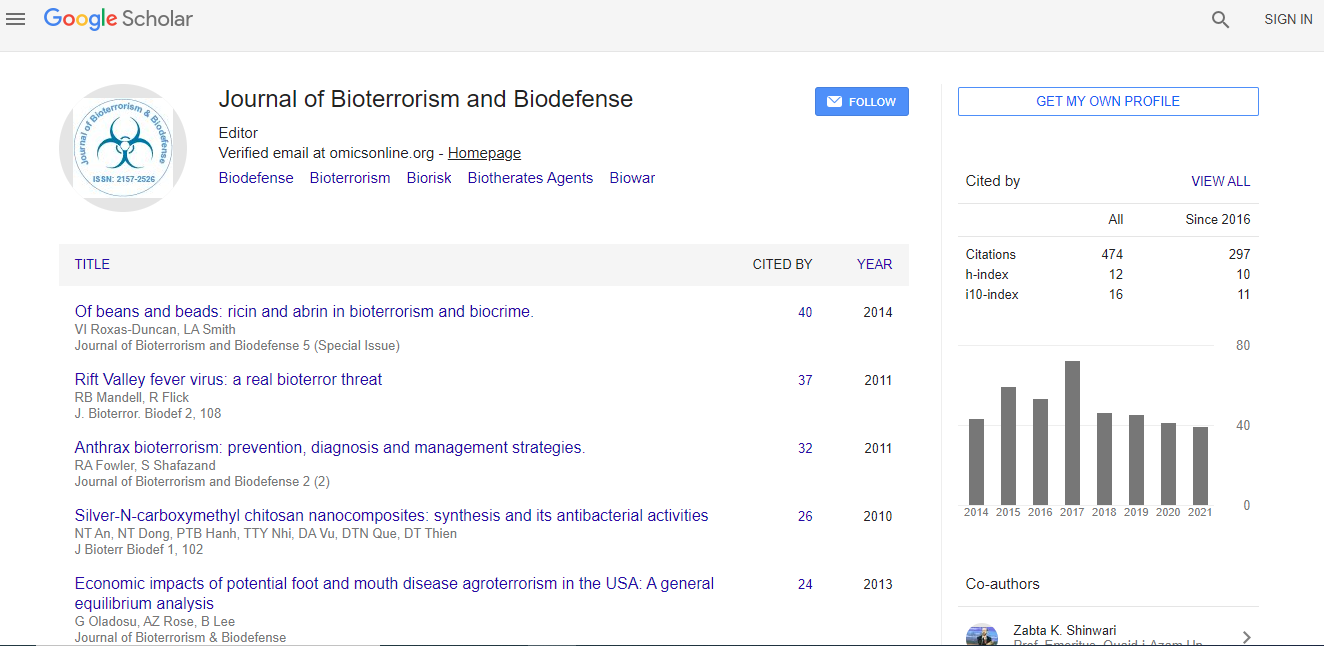Research Article
Francisella tularensis - Immune Cell Activator, Suppressor, or Stealthy Evader: The Evolving View from the Petri Dish
Kristen M. Holland, Sarah J. Rosa, and Karsten R.O. Hazlett*
Center for Immunology & Microbial Disease, Albany Medical College, Albany, NY 12208, USA
- *Corresponding Author:
- Karsten R.O. Hazlett
Center for Immunology & Microbial Disease
Albany Medical College, Albany
NY 12208, USA
Tel: (518) 262-2338
Email: Hazlett@mail.amc.edu
Received Date: March 21, 2016 Accepted Date: April 06, 2016 Published Date: April 12, 2016
Citation: Holland KM, Rosa SJ, Hazlett KRO (2016) Francisella tularensis - Immune Cell Activator, Suppressor, or Stealthy Evader: 1 The Evolving View from the Petri Dish. J Bioterror Biodef 7:144. doi:10.4172/2157-2526.1000144
Copyright: © 2016 Holland KM, et al. This is an open-access article distributed under the terms of the Creative Commons Attribution License, which permits unrestricted use, distribution, and reproduction in any medium, provided the original author and source are credited.
Abstract
One of the hallmarks of pulmonary tularemia, which results from inhalation of Francisella tularensis - a significant bioterrorism concern, is the lack of an acute TH1-biased inflammatory response in the early phase of disease (days 1-3) despite significant bacterial loads. In an effort to understand this apparent hypo-responsiveness, many laboratories have utilized in vitro cell-based models as tools to probe the nature and consequences of host cell interactions with F. tularensis. The first uses of this model suggested that mammalian host cells recognize this bacterium principally through TLR2 to evoke a robust, classical TH1-biased cytokine response including TNF, IL-6, IL-1β, and IFN-γ. Others used this model in concert with a variety of non-genetic perturbations of the bacterial-host cell interaction and suggested that F. tularensis actively-suppressed the cellular response. Consistent with this notion, others engaged this model to assess isogenic mutants and, in many cases, found the mutant bacteria to be more pro-inflammatory than their WT counter-parts. Frequently, these observations were interpreted as evidence for the immunosuppressive function of the gene of interest. However, recently appreciated roles of the health of the bacterium and the impact of host factors have refined this model to suggest a “stealthy” mode of bacterial-host cell interaction (rather than one involving active suppression) consistent with the observations during early phase disease.

 Spanish
Spanish  Chinese
Chinese  Russian
Russian  German
German  French
French  Japanese
Japanese  Portuguese
Portuguese  Hindi
Hindi 